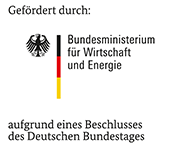
The combination of electrochemistry and enzyme catalysis enables manifold forward-looking production systems and resource conserving processes. In electroenzymatic processes, electrochemical reactions are used to produce reactants as well as to regenerate or substitute cosubstrates. Especially the combination of hydrogen peroxide-dependent enzymes (peroxidases, peroxygenases, laccases and under special conditions lipases and P450 monooxygenases) with electrochemical processes shows an extremely high application potential. For example peroxidases can be used for several selective oxygen transfer reactions as hydroxylations or epoxidations. Due to a broad substrate- and reaction spectrum and the independence of cofactors, those enzymes are industrially interesting and versatilely applicable. Besides the application in synthesis, their reaction diversity provides the possibility to apply those enzymes in persistent pollutant removal, e.g. in waste water treatment. However, most H2O2-dependent enzymes show low stability towards their cosubstrate. This is one of the main reasons, why to date, these enzymes are rarely used in industrial processes. The adjustable electrochemical H2O2-production can be used to drastically increase the total turnover number (ttn) of the reaction and enable high space time yields at the same time. By electrochemical adjustment of the H2O2-production rate, it is possible to keep the cosubstrate concentration below the critical value, nevertheless achieving high production rates. In previous work, gas diffusion electrodes have shown to be the most suitable electrode type for electroenzymatic oxidations and oxygenations [1-4]. In this project, we will develop several system solutions for the application of H2O2-dependent enzymes using the examples of chloroperoxidase, unspecific peroxygenase and lipase.
1. Getrey, L., et al., Enzymatic halogenation of the phenolic monoterpenes thymol and carvacrol with chloroperoxidase. Green Chemistry, 2014. 16(3): p. 1104-1108. 2. Holtmann, D., et al., Electroenzymatic process to overcome enzyme instabilities. Catalysis Communications, 2014. 51(0): p. 82-85. 3. Krieg, T., et al., Gas diffusion electrode as novel reaction system for an electro-enzymatic process with chloroperoxidase. Green Chemistry, 2011. 13(10): p. 2686-2689. 4. Horst, A.E., K.M. Mangold, and D. Holtmann, Application of gas diffusion electrodes in bioelectrochemical syntheses and energy conversion. Biotechnology and Bioengineering, 2015. |
|||||||||||||

Das IGF-Vorhaben Nr. der Forschungsvereinigung DECHEMA e.V., Theodor-Heuss-Allee 25, 60486 Frankfurt am Main wurde über die AiF im Rahmen des Programms zur Förderung der industriellen Gemeinschaftsforschung (IGF) vom Bundesministerium für Wirtschaft und Energie aufgrund eines Beschlusses des Deutschen Bundestages gefördert.
+49-69-7564-456
J. Meyer...A. Drews
Biochemical Engineering Journal
118, 34-40
Journal of Molecular Catalysis B: Enzymatic
Journal of Molecular Catalysis B: Enzymatic